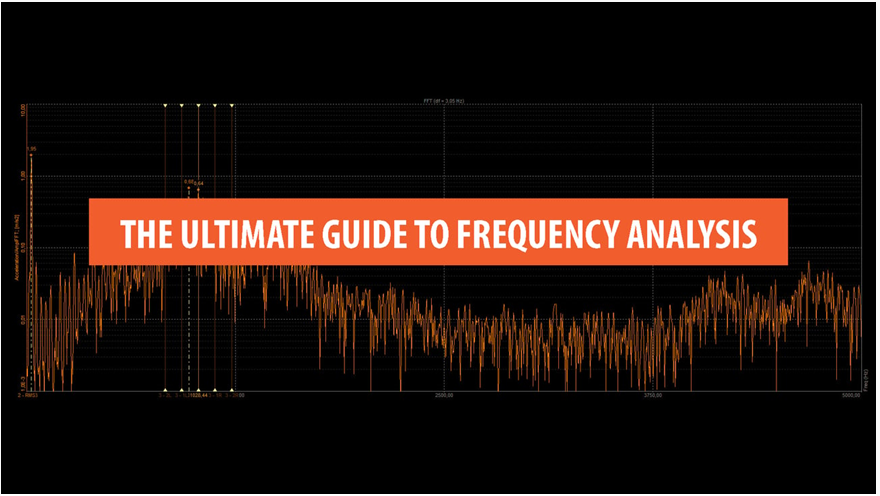Dewesoft’s document titled “FFT Analysis (Fast Fourier Transform): The Ultimate Guide to Frequency Analysis“ provides a comprehensive overview of the theory and practical application of Fast Fourier Transform (FFT) analysis for frequency analysis.
However, before we discuss what this guide entails let’s get a better understanding of FFT Analysis and Frequency Analysis.
FFT Analysis and Frequency Analysis – same or different?
Firstly, FFT analysis and frequency analysis are related concepts. However, they are not the same thing.
Frequency analysis = process of analysing a signal to determine its frequency content.
This can be done using various techniques including Fourier analysis. The Fourier analysis contains continuous Fourier transform and discrete Fourier transform (DFT).
FFT analysis = is a specific algorithm. Used to efficiently calculate the DFT of a signal. The FFT algorithm is an efficient way of calculating the DFT, and it is widely used in signal processing applications, including frequency analysis.
So while FFT analysis is a specific technique for calculating the frequency content of a signal. Frequency analysis is a more general term that includes techniques for analysing the frequency content of a signal, including Fourier analysis and FFT analysis.
What is FFT Analysis?
FFT analysis, or Fast Fourier Transform analysis, is a mathematical technique used to analyse signals in the frequency domain. Firstly, it is a method for analysing periodic and non-periodic signals and extracting information about their frequency content.
Secondly, FFT analysis works by taking a time-domain signal and transforming it into the frequency domain. It does this by using a complex mathematical algorithm called the Fast Fourier Transform. The resulting frequency-domain signal shows the amplitudes and phases of the various sinusoidal components that make up the original signal.
FFT analysis is used in a wide range of applications. Such as vibration analysis, acoustics, signal processing, and image processing. It allows researchers and engineers to extract valuable information about the frequency content of a signal. For example identifying dominant frequencies, analysing noise, and detecting periodicity.
Overall, FFT analysis is a powerful tool for understanding the frequency characteristics of signals, and it has become an essential technique in many areas of science, engineering, and technology.
“FFT Analysis (Fast Fourier Transform): The Ultimate Guide to Frequency Analysis” by Dewesoft.
The document covers the following topics:
- Introduction to FFT analysis and frequency analysis: The document begins with an introduction to the basics of FFT analysis and frequency analysis. Including the concept of sine waves and the Fourier transform.
- FFT analysis theory: The document then provides a detailed explanation of the FFT algorithm. Including how it works, how it is implemented, and its limitations.
- FFT analysis applications: The document also discusses various applications of FFT analysis. Such as vibration analysis, acoustic analysis, and power analysis.
- FFT analysis in Dewesoft: The document provides an overview of Dewesoft’s FFT analysis capabilities, including how to perform FFT analysis in Dewesoft and how to interpret the results.
- FFT analysis best practices: Finally, the document provides some best practices for performing FFT analysis. Such as including tips on selecting the appropriate sampling rate and windowing function, and avoiding common mistakes.
Overall, the document provides a thorough and practical guide to FFT analysis, making it a valuable resource for anyone looking to understand and apply FFT analysis techniques for frequency analysis.
Download Guide to Dewesoft FFT Analysis: The Ultimate Guide to Frequency Analysis
For more information regarding Dewesoft’s Product Range and to learn more about their capabilities, contact us.
